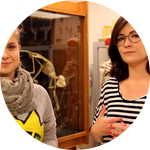Please wait...
About This Project
We are now closer than ever to solving the mystery of human language evolution - and birdsong might be the key. As it turns out, songbirds have specialized birdsong brain circuits that show similar patterns of gene activation as the brain circuits that mediate human speech. In our research, we propose to study gene activation in the brains of a songbird species that may offer insights into how our species evolved this complex vocal behavior.





